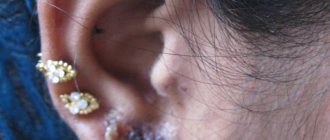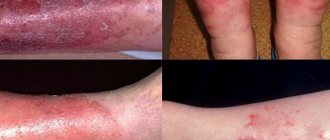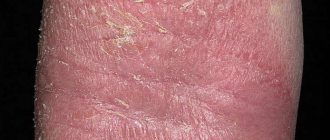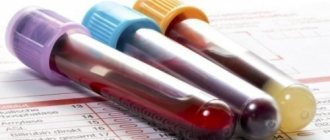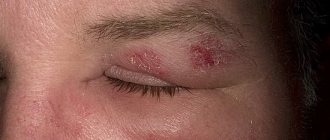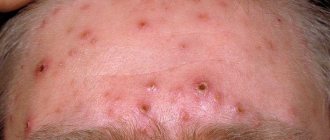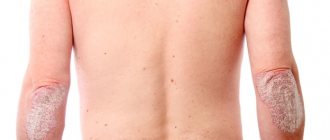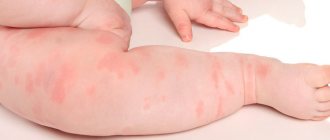- Stages of disease development
- Reasons for the appearance of dermatitis
- Seborrheic dermatitis
- Treatment of the disease
- Folk remedies
Treatment of facial dermatitis in adults can last a long time if this disease is not recognized in time. Its signs are similar to ordinary allergies, psoriasis and other diseases. A distinctive feature of dermatitis on the face is irritation or inflammation of the skin. This condition causes a person both physical and psychological discomfort.
Causes of the disease
The most common causes of atopic dermatitis on the face are the following:
- Failure of the functioning of the endocrine glands, which is detected during testing.
- Cosmetics that are unsuitable for your skin type, or low quality care products that have expired.
- Heredity, genetic factor. If close relatives suffer from this disease, it may also affect you. In this case, it is necessary to take preventive measures.
- Hormonal imbalances in the body.
- Dry indoor air. Rare walks in the fresh air can provoke the manifestation of symptoms of the disease.
- Bad habits, alcohol, smoking, poor diet can cause atopic dermatitis.
- Insomnia, severe stress.
A photo of atopic dermatitis on the face indicates manifestations of the disease. If you notice such signs in yourself, you should pay attention to your health, lifestyle, and consult a doctor.
Treatment of the disease
Only a qualified dermatologist knows how to treat dermatitis on the face. He will determine the type of skin lesion and prescribe the necessary comprehensive treatment. The doctor will tell you how to cure inflammation on the face at home using creams, ointments, and products for internal use.
The approach to each patient must be individual. The doctor must prescribe treatment based on the clinical picture and type of disease. The main goals of therapy are to eliminate the cause and prevent contact with the irritant. To relieve a person from burning and itching, the doctor prescribes corticosteroid ointments, for example, Prednisolone, Hydrocortisone.
Comprehensive treatment of all types of this disease includes following a special diet and taking the following medications:
- vitamins A, B6, E, nicotinic acid, multivitamins, fish oil;
- sedatives, if there is insomnia or increased excitability (valerian extract, tinctures and preparations based on natural ingredients).
Your doctor may prescribe ointments that contain zinc. They have a drying, disinfecting and anti-inflammatory effect. It can be Zinc ointment, Chatterbox or Tsindol. In cases where it is necessary to dry the wet crusts, the patient undergoes irradiation with ultraviolet rays or cryotherapy.
To treat seborrhea, a person will need to wipe the dermis with salicylic acid, which has a detrimental effect on the fungus. Anti-fungal drugs are also used - Sebozol tablets and Clotrimazole and Mycozoral ointments.
Oral therapy includes a course of taking Trichopolum or Metronidazole, which is developed individually. In addition, the following are assigned:
- steroid ointments;
- antibacterial tablets.
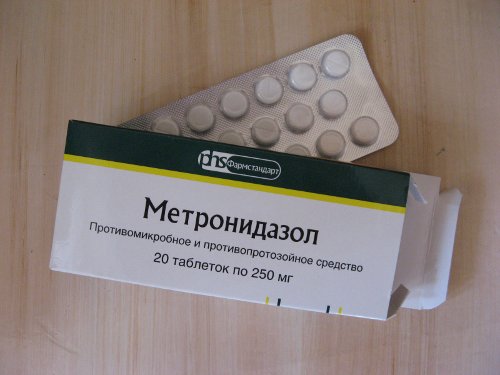
Physiotherapy procedures have a therapeutic effect.
If left untreated, this type of disease leads to thickening of the affected skin and the formation of bumps on it. Oral dermatitis often affects young women. The success of therapy depends on taking vitamins and proper nutrition. It is necessary to give up bad habits, drinking strong tea and coffee.
Treatment of an allergic type begins with identifying the irritant and avoiding contact with it. Therapy is carried out with antihistamines. This could be Zyrtec, Suprastin and Tavegil. Intravenous administration of a 10% solution of calcium gluconate helps reduce the sensitivity of the dermis.
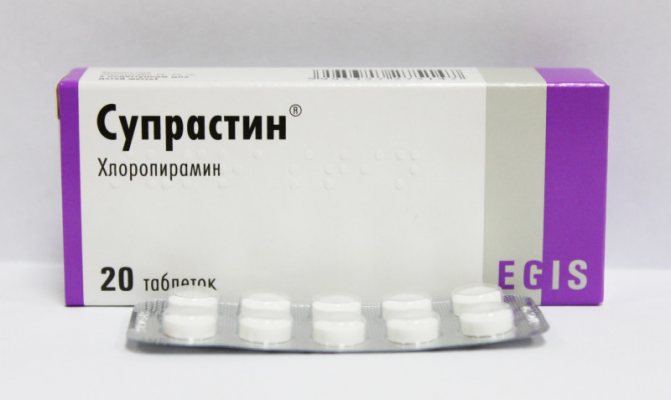
In the atopic form, the doctor prescribes Afloderm or Elokom cream or ointment to relieve itching and swelling. Solcoseryl gel will speed up the restoration of the dermis and help quickly heal wounds. For blisters and ulcers, topical corticosteroids (Advantan) are effective.
Symptoms of atopic dermatitis on the face
Dermatitis can be subacute, acute and chronic. Each has its own characteristic symptoms. Subacute form:
- formation of scales and scabs on the skin;
- severe itching is felt and red spots appear.
In acute form:
- swelling, inflammation is pronounced, this is clearly visible in the photo of atopic dermatitis on the face;
- pain, facial skin is painful to touch, sensitivity increases;
- itching, burning;
- Blisters and areas of necrosis may appear.
Photos of atopic dermatitis in children on the face:
If the disease becomes chronic, longer and more complex exposure is required. Symptoms:
- the face becomes covered with inflammatory lesions;
- the rash appears in the cheeks, nose, forehead, mouth;
- the skin peels, severe itching, and watery blisters appear;
- sensitivity worsens until pain occurs;
- There may be pain in the joints, in the head, and an increase in temperature;
- the skin becomes thinner, becomes dry, and resembles parchment.
Dermatitis develops very quickly. If similar symptoms begin to bother you (photos of atopic dermatitis on the face), treatment should begin immediately. This will prevent the disease from developing into more severe forms.
Atopic dermatitis on the face. Treatment
Atopic dermatitis (eczema) develops from allergic dermatitis, but its form is more advanced, and it is much less treatable. On the face, eczema is chronic.
Atopic dermatitis on the face cannot be treated with one drug. Skin inflammatory processes are a consequence of many negative reactions of the body that affect various systems. Before prescribing treatment, the doctor, using tests, provocative, intradermal tests, finds out the etiology of the disease, the reasons why the inflammatory processes occurred. Only then is adequate treatment prescribed, including a number of different drugs.
Atopic dermatitis takes a long time to treat, which can take months. That is why it is recommended to treat the allergic type of dermatitis in a timely manner.
Diseased areas of the skin become too vulnerable, inflammation progresses, and the skin becomes rougher. Causative agents of various infections easily settle on open wounds, making treatment more complicated. The following series of drugs are usually prescribed:
- Antidepressants, sedatives (infusions of motherwort, valerian, Novopassit, Persen).
- Individual or complex vitamin therapy, pyridoxine is prescribed.
- Antihistamines.
- Immunomodulators.
- Ointments, creams for dermatitis (hormonal or non-hormonal).
- In advanced cases, hormone therapy is performed.
Atopic dermatitis in children on the face is treated taking into account the form of the disease, stage, and period. It is important to take into account the age of the child, as well as the area of the affected skin. The products differ in: systemic action (used in combination) and external use.
What types of dermatitis are there?
By age category, dermatitis can be infantile (in infants from 1-2 months to 2 years) and childish - from 2 years and older. According to etiology, the disease is classified into the following types:
Infectious dermatitis
It is formed due to the presence of some kind of infection in the body (rubella, scarlet fever, measles, chicken pox, etc.). Pathogenic bacteria can penetrate the skin if there are unhealed wounds, scratches, etc. on the body. In some cases, the infection develops after surgery, when complications arise and dangerous microorganisms penetrate the open wound. And depending on the underlying cause of the pathology, infectious dermatitis is characterized by the presence of red spots, papules and small blisters filled with clear liquid.
Allergic
This type of disease has a chronic form and occurs under the influence of one or another allergen and is characterized by the presence of redness on the folds of the arms and legs, as well as on the back and abdomen. Allergic dermatitis is often accompanied by pathologies of the liver or gastrointestinal tract.
Atopic
Atopic dermatitis (also known as diathesis) is most often inherited or formed under the influence of unfavorable environmental conditions. The disease appears in the first years of life and, in addition to rashes, is characterized by unbearable itching and aggression.
We recommend: The child has a fever without symptoms
Contact
In this case, foci of inflammation are localized in those areas of the body that come into contact with some irritant (synthetic clothing, diapers, care products, etc.) that causes diaper rash and skin irritation. The disease is accompanied by redness, pain and swelling, and subsequently - the presence of ulcers, ulcers, scars, etc.
Inflammatory processes form mainly in places of cracks, scratches and abrasions.
Fungal
In most cases, the disease occurs in a latent form, which makes it difficult to diagnose. Fungal dermatitis is characterized by allergic rashes, burning and itching. In infants, thrush (a white coating on the oral mucosa) can be detected. This form of the disease is the most dangerous because it can be transmitted to other family members.
And this is not a complete list of types of dermatitis; there are many more.
Antihistamines
Atopic dermatitis on the face in adults is treated with the mandatory use of antihistamines. Most often, the doctor recommends:
- "Elokom". Helps relieve swelling and has an antipruritic effect.
- "Trickzera". Helps reduce facial skin sensitivity.
- "Afloderm". The product is used for three weeks. Relieves swelling, itching, reduces inflammation.
- "Solcoseryl". Has a healing effect.
At the same time, doctors recommend the use of drugs to maintain the proper functioning of the gastrointestinal tract, as well as drugs to stabilize a person’s emotional state.
Corticosteroids
Treatment of atopic dermatitis on the face in adults during the acute period includes, in addition to antihistamines, corticosteroids (hormones). Their influence extends to the foci of inflammation, thereby making the course of the disease significantly easier.
Atopic dermatitis on the face in adults, photo:
"Betamethasone." It has an effective effect at any stage of inflammation by reducing the concentration of lysosomal enzyme. Anti-allergenic and antipruritic effect. Relieves swelling due to improved microcirculation of interstitial fluid.
"Dexamethasone." The drug has a wide spectrum of action and is used in the treatment of all forms of dermatitis. Has antipruritic, anti-edematous, anti-inflammatory effect. It is worth noting that it has many side effects, so it can only be used under the supervision of a doctor.
"Prednisolone." It influences various types of metabolism in the human body. Has anti-allergic and anti-inflammatory effects. Helps with allergic, atopic, seborrheic dermatitis. Removes swelling, itching, inflammation. It has side effects and should be used only on the recommendation of a doctor.
Treatment at home
To treat atopic dermatitis, it is important to eliminate the factors that provoke relapses. It is necessary to use folk remedies, as they act more gently and without side effects, while bringing real relief. Externally used:
- Aloe based mixture . Grind aloe leaves (200 grams) into a pulp and keep it in a cool (no more than 6 degrees Celsius) place without access to sunlight for 12 days. After the time has passed, pour castor oil (150 ml) and red wine (50 ml) into the gruel and mix everything well. Place the mixture in gauze and apply to the inflamed areas for 20 minutes. Use the treatment for 3 weeks.

- Plantain tincture with wine . Take fresh plantain leaves (5 pieces) and pass them through a meat grinder. Pour good white wine (1/3 cup) into the resulting slurry. Wipe the skin lesions with the resulting product twice a day for 14 days. Store the medicine in the refrigerator.
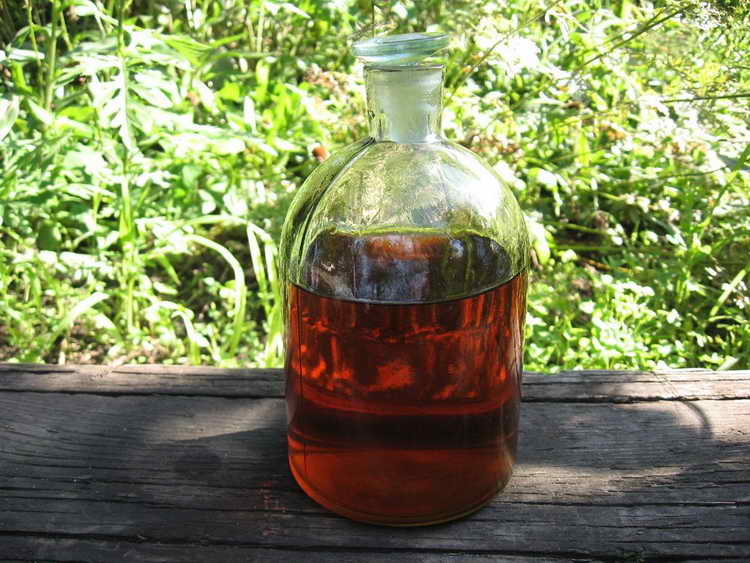
- Chamomile infusion . Brew chamomile flowers (a tablespoon) with boiling water (250 ml) and leave for 20-30 minutes. Apply the resulting infusion as a compress to areas affected by the disease. Chamomile infusion is also used to treat urticaria in children.
- Celandine . Grind the celandine into a pulp and squeeze the juice out of it. Dilute it with boiled water in a ratio of 1 to 2. Apply short-term (10 minutes) applications to the affected areas. You can also prepare an infusion based on celandine: grind fresh celandine herb (60 grams) in a meat grinder and squeeze out the juice, which is poured into a hermetically sealed bottle. Infuse the juice out of direct sunlight for a week, periodically opening the lid to release accumulated gases. After a week, pour vodka (60 ml) into the juice and put the product in the refrigerator for 2 days. Apply the product with a cotton swab to areas of inflammation 2-3 times a day. Continue the course of treatment for at least 3 weeks.
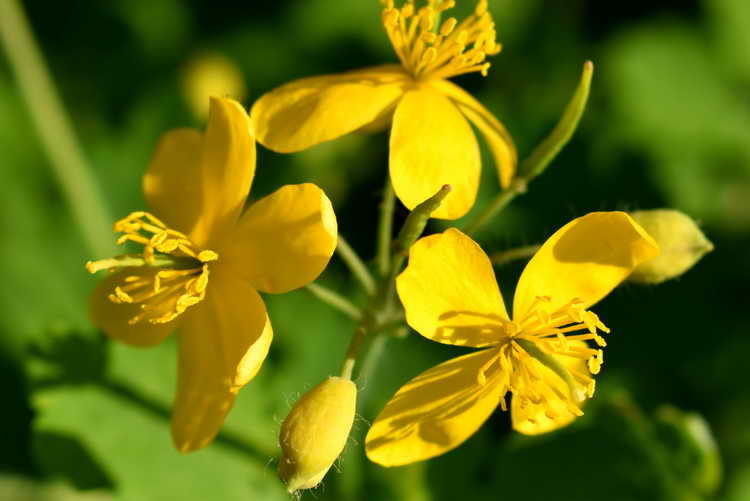
- Infusions of succession . Brew the herb (1 tablespoon) with boiling water (1/2 cup) and soak the infusion until a rich brown color is obtained. Soak gauze pads in the resulting infusion and apply them to areas of inflammation until completely dry. Repeat the procedure 3-4 times a day. The herb is included in the composition of medicinal preparations used for the treatment of vitiligo.
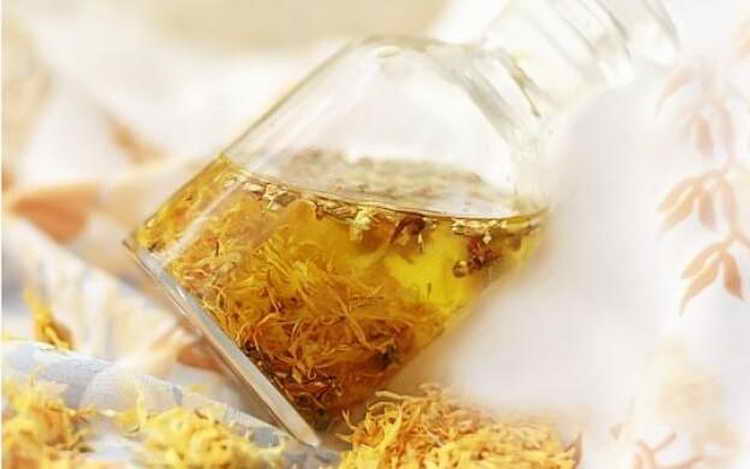
- Periwinkle decoction. Pour water (a glass) of periwinkle leaves (a tablespoon) and simmer the product over low heat for 10 minutes. Let the broth cool and strain it into bathing water, and wrap the remaining grounds in gauze and apply to sore spots.
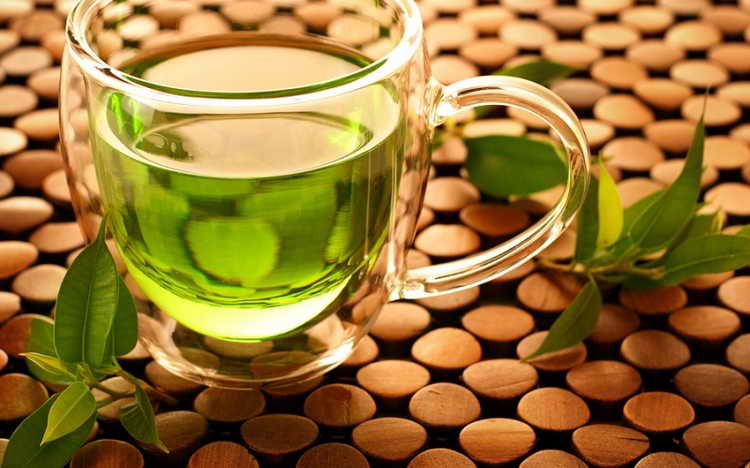
- Tea tree oil . Apply 2-3 drops of tea tree oil to the affected area and rub with light massaging movements over the entire surface. Also carry out 20-minute applications with oil-soaked wipes.
- Fresh cucumber and apple juice . Mix freshly squeezed cucumber and non-acidic apple juice in a 1 to 1 ratio and apply the mixture to the affected areas.

- Infusion of birch buds . Steam birch buds (a tablespoon) with boiling water (300 ml) and leave the infusion for 3 hours. Add the product to your bath for 20 minutes.
For oral administration use:
- Melissa tea . Pour a cup of water over a tablespoon of dried herb and leave for 20 minutes. Drink this tea twice a day: in the morning and before going to bed.
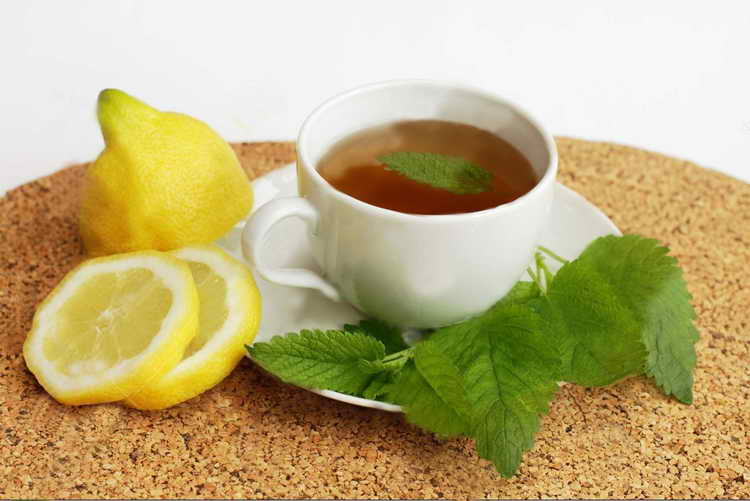
- Infusion of Sophora japonica . Pour boiling water (one glass) over crushed sophora fruits (a tablespoon) and leave overnight. In the morning, slightly warm the infusion and drink it all.
- Infusion of cornflower flowers. Brew the raw material (10 grams) with boiling water (a glass) and let it brew. Drink 1/4 cup 20 minutes before meals 3 times a day.
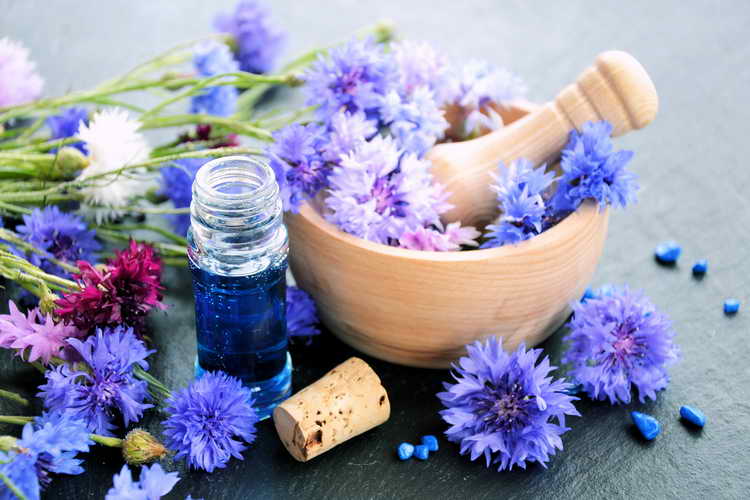
- Medicinal tincture . Mix the leaves and flowers of black elderberry, St. John's wort, elm bark (10 grams of all ingredients) with the roots of calamus (15 grams) and elecampane (5 grams). Grind all the ingredients well and pour boiling water (100 ml) to steep for 24 hours. Filter the infusion, bring to a boil and pour in vodka (100 grams). Leave the resulting tincture for 10-12 hours and take 2 teaspoons, adding them to 1/2 glass of water, twice a day. Continue treatment for 14 days.

- A mixture of lemon juice, vodka and eggshells . Wash the eggshells well, dry and grind into powder. Combine the powder with lemon juice and vodka (take a teaspoon of all ingredients). It is enough to take a teaspoon of the product per day, consuming it in 2 doses. Treatment is designed to last at least a month. Eggshell powder with lemon juice is recommended for the treatment of diathesis in infants.
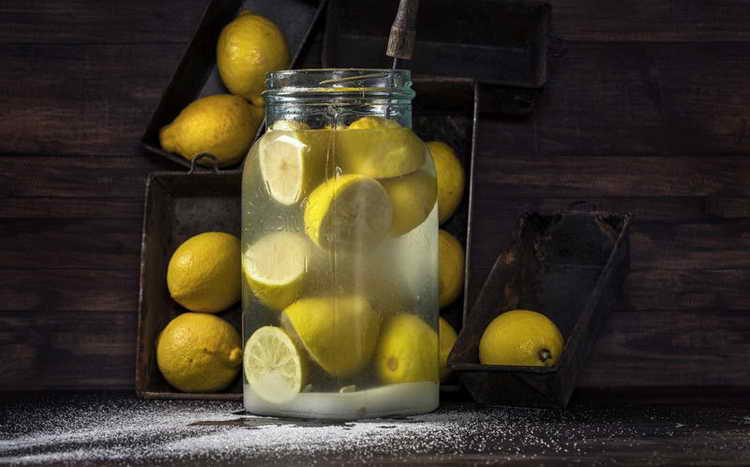
- Infusion of hop cones . Grind hop cones (1/4 cup) and brew them with boiling water (200 ml). Infuse the resulting mixture for 30 minutes and take 50 ml before meals.
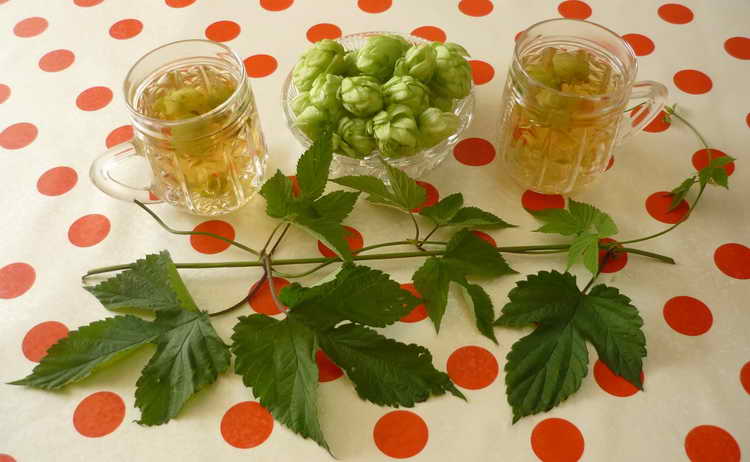
Ointments and creams
One of the effective ways to treat atopic dermatitis on the face is the use of ointments and creams. They are divided into two large groups: non-hormonal agents and hormonal ones.
If the form of the disease is not advanced or severe, the doctor prescribes non-hormonal medications. They have a high therapeutic effect, while at the same time they have fewer side effects.
"Eplan". Used for various types of dermatitis, including atopic dermatitis on the face in adults. Has an antihistamine, anti-inflammatory effect, accelerates skin regeneration.
"Exoderil". Has an antifungal effect, reduces itching and inflammation.
"Gistan". Antiallergic drug. Visually reduces the manifestations of dermatitis, relieves swelling, itching, protects and moisturizes the skin.
"Radevit." Used to treat all types of dermatitis. Has antihistamine, decongestant and anti-inflammatory effect. The ointment contains extracts of medicinal plants.
"Losterine." The composition includes D-panthenol, plant extracts, natural oils. The effect on the skin is multifaceted: decongestant, antipruritic, antiallergic effect.
"Isis." The ointment has an antiseptic effect and prevents the development of inflammation. Contains herbal extracts and antiseptic. The ointment supports the skin's resistance and resistance to adverse factors.
"Topicrem". Face cream for atopic dermatitis, also useful for any irritation. Has a stimulating, regenerating, anti-inflammatory effect. Effective for dry, sensitive skin prone to various rashes, acne, redness. The protective film eliminates the feeling of tightness and maintains normal water balance. Contains: lactic acid, beeswax. Does not cause allergies, does not have a comedogenic effect, therefore suitable for use by children and adolescents.
Hormonal drugs are used as prescribed by a doctor. They are used for more severe forms of dermatitis.
Akriderm. Suitable for all types of dermatitis. It has anti-inflammatory and antipruritic effects, reduces redness, swelling, and peeling.
"Flucinar." Dries out areas of inflammation, reduces redness and swelling. The hormones included in the composition are not indicated for use during pregnancy and in children under two years of age.
"Celestoderm". Actively affects all types of dermatitis. Reduces the inflammatory process, relieves itching, swelling, and has antihistamine properties.
It is important to remember that hormonal drugs have many side effects, using them on your own is dangerous and can lead to various health problems. Use these products only under the supervision of a doctor.
Antibiotics
In some cases, specialists, along with antihistamines and ointments, prescribe antibiotics for atopic dermatitis on the face. They help to successfully reduce inflammation. Most often these are:
- "Tetracycline".
- "Doxycycline."
- "Minocycline."
In some cases, in the first days of using antibiotics, the condition worsens. But after a course of treatment (from 10 to 14 days), a positive effect occurs, the condition of the skin improves, and inflammation goes away.
Normalization of intestinal microflora
Often, dermatitis that appears on the face is accompanied by problems that arise in the gastrointestinal tract. The functioning of the intestines is disrupted, the absorption of nutrients is reduced, and dysbiosis occurs. To eliminate this problem, along with other remedies, drugs that restore intestinal function are prescribed in combination.
"Acipol" helps eliminate digestive disorders, even those that have been going on for a long time. The drug is able to stimulate the immune system and increase the body's resistance to harmful factors. This is especially important for chronic forms of dermatitis. "Acipol" treats intestinal and eating disorders. There are no contraindications for use and no side effects.
"Hilak Forte". The drug contains synthetic lactic acid. It restores the acidity of the stomach and accelerates the development of normal symbionts in the intestines. In a short time, the intestinal microflora is normalized, pathogenic flora is reduced, and digestion is improved.
"Lysozyme". This is a probiotic that restores the correct intestinal microflora. It has an anti-inflammatory effect, negatively affects pathogenic microflora, and helps in the absorption of nutrients.
Causes
The condition of the facial skin is influenced by many factors:
- environment;
- food and water;
- medication treatment;
- the presence of pathology of internal organs and systems.
Risk factors in the environment may include:
- pollution of open water bodies;
- the presence of components harmful to health in the atmospheric air (car exhaust gases, emissions during industrial production and others);
- chemical and biological contamination of soil and dust that forms from it;
- natural household pollutants (dust, toxic fumes from furniture made from low-quality materials, plant pollen, etc.).
Food and poor-quality drinking water may contain components that are allergens for some people (citrus fruits, strawberries, certain types of fish).
The risk of developing non-standard reactions is especially high when treated with growth enhancing agents.
Treatment of certain diseases, for example, uncontrolled use of antibiotics, can also affect metabolism and cause disruptions in the functioning of endocrine organs.
This reaction of the body can result in facial problems and gastrointestinal disorders.
Every day the number of people with facial skin diseases due to allergic manifestations to provoking factors is growing.
Device therapy methods
Treatment of atopic dermatitis on the face, in addition to the listed methods, also includes exposure to devices.
Ultraphonophoresis. The impact on the foci of the disease is carried out inside the skin layers. A medicinal drug (longidase, dexamethasone) is applied to the skin, then it is exposed to ultrasonic waves, with their help the medicine penetrates into the deep layers of the dermis. The effect is cumulative. With each procedure, the drug accumulates more and more, and after 5-6 procedures the therapeutic effect begins. Penetration of the drug is ensured by changing the frequency and power of the waves in the apparatus. Already after 7-8 sessions a noticeable effect is observed. If atopic dermatitis is acute, up to 15 procedures are recommended.
Microcurrent drainage. The procedure is carried out using a weak pulsed current, which has a low frequency. Its effect reduces swelling, improves lymphatic drainage in tissues, and reduces itching and inflammation. Microcurrent promotes normal nutrition of the intercellular space and restoration of the transport of nutrients into cells.
It is important to remember that during the acute period, hardware procedures are not recommended. This therapy is considered most effective for chronic forms.
Nutrition rules
When treating dermatitis, you should follow the rules of a “healthy” diet as much as possible, as well as drink enough clean drinking water.
Dishes should be prepared by boiling, stewing, or steaming. Smoking, frying, grilling are unacceptable.
The diet should contain a maximum of vegetables, fruits, and herbs. Porridges rich in minerals and vitamins, such as buckwheat, will be useful.
Colon cleansing can be done using bran and plant fiber. Fiber can be obtained from natural apples and carrots, and bran can be added to porridge or simply steamed with boiling water.
Eating fermented milk products (kefir, low-fat cottage cheese) is beneficial. Such products will help restore disturbed intestinal microflora and stabilize the functioning of the digestive system.
You should exclude from your diet:
- allergenic products (caviar, certain types of sea fish, citrus fruits, whole milk, chocolate);
- food prepared with the addition of artificial flavor enhancers;
- canned food;
- carbonated drinks;
- fatty, sour, spicy, too salty dishes.
Meat should be cooked using the double-boiling method, and cereals should be soaked in cold water for up to 10 hours before cooking.
